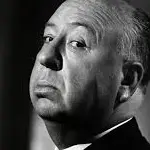In A Working Man, which hit theaters in late March, Jason Statham sticks to his tried-and-true formula of playing a simple, brutal character who lives under a false identity, works hard, gets dragged into conflicts, and ultimately dishes out justice. His workplace this time? Chicago—the crime genre’s favorite urban jungle. His enemies? Russian gangsters—this genre’s most stereotyped villains.

This marks the second collaboration between the British action star—whose fighting style is as straightforward and relentless as his character design—and director David Ayer. As like The Beekeeper, the story kicks off with the protagonist trying to retreat from violence, only to be reluctantly pulled back in, leading to a righteous rampage in which he single-handedly wipes out wave after wave of bad guys. From The Beekeeper to A Working Man, the scenery shifts from Massachusetts to Illinois, Ayer’s hometown. The victim changes from an elderly woman scammed out of her life savings to a kidnapped Latina high school girl. And the villains? They've swapped a relatively trendy online fraud ring with the long-overused Russian mafia trope.
This kind of genre film runs on formula. Follow the classic screenwriting blueprint—where a conflict is set up, and gradually escalates through a series of challenges to sustain audience tension—and you’ve got a functional story framework. But with the unstoppable Statham, there’s no need to rack your brain crafting clever hurdles for the protagonist to overcome or any special plot devices. It’s as if someone just typed a prompt into an AI tool: “Protagonist: Jason Statham. Villains: Russian baddies. Victim: Latina girl. Please create 10 villain squads to be defeated within 120 minutes.” Throw in some henchmen in tacky tracksuits and useless mob bosses, and the screenplay practically writes itself.
As German philosopher Georg Wilhelm Friedrich Hegel once said, “What is real is rational.” American and British action screenwriters might say, “If Jason Statham exists, then meting out vigilante justice is rational.”
Of course, that’s a bit of an exaggeration. A Working Man is at least based on the 2014 novel Levon’s Trade by American comic book writer Charles Dixon, known for his works with both Marvel and DC. And on adaptation duty—alongside Ayer—is none other than Sylvester Stallone who’d been appointed as a special Hollywood envoy after Donald Trump’s return to the White House. Apparently, the mission to Make Hollywood Great Again starts with cleaning up the streets of Chicago.

“Every great city is built on a crime,” American filmmaker Edward Norton remarked in an interview ahead of the 55th Chicago International Film Festival’s opening in 2019. That year, the festival kicked off with Motherless Brooklyn, a film he both directed and starred in. I was fortunate enough to be invited by the Chicago Film Office at the time—not only to preview the film, but also to explore the city from studio backlots to actual streets, gaining a deeper understanding of the “sinful” Chicago.
After all, when it comes to how Chicago is portrayed on screen, most audiences immediately think of crime and violence. And maybe that’s for the best. Within the atmosphere of a city imagined as teeming with danger, “crime tourism” has long become part of Chicago’s brand.
Take a train from the outer suburbs into the heart of the city: you would pass by endless stretches of farmland and low-slung homes that’ve gradually given way to density. As you near Lake Michigan, the city suddenly shifts from a horizontal sprawl to a vertical ascent—welcome to the birthplace of skyscrapers. In this earliest concrete-and-steel jungle, countless thrilling tales of good versus evil unfold. In Source Code, Jake Gyllenhaal’s Captain Stevens repeatedly wakes up inside a pod, only to find himself thrown—again and again—onto a commuter train destined to explode just before reaching downtown.

Union Station, the Beaux-Arts landmark in the closing scene of Source Code, has played host to countless iconic moments on screen. Most famously, it’s where Kevin Costner and Andy Garcia’s characters apprehend the mob accountant in The Untouchables—a scene immortalized by the baby carriage tumbling down the steps, which was designed as a masterful homage to the Odessa Steps sequence from Battleship Potemkin.
Downtown’s multi-level streets, brushing up against the sides of buildings, have been wrecked time and again in the Transformers franchise and in The Dark Knight. In The Untouchables, Robert De Niro’s Al Capone—Chicago’s infamous “underground mayor”—descends the steps of the Cultural Center to declare his innocence to the press. That same stairwell plunges straight into Millennium Station, where Batman chases the Joker through the underground. And since the Batpod was already rolling, the filmmakers didn’t hold back: they locked down several major arteries of the Loop to let the Joker run riot, even wiring the lower deck of Wacker Drive with cables to down a police helicopter.

The Wayne Enterprises headquarters is located in this very district too. It’s housed in the Richard J. Daley Center—its front plaza famously marked by a massive Picasso sculpture. Bruce Wayne’s penthouse, which oversees the whole of Gotham, is actually located in the Wyndham Hotel building, perched right above the Chicago River.
Having dominated the city through organized crime for seven years during the Prohibition era (1925–1931), Al Capone naturally stands as the undisputed leading figure of American gangster films. In real life, souvenir shops selling dolls in his likeness line the streets; talk show hosts compete to mimic his Neapolitan accent and quote his infamous line: “You can get much further with a kind word and a gun than you can with a kind word alone.”
Today, the part of Chicago that still deters visitors is the notoriously troubled South Side. Its ruling power has shifted from the old Italian mafia to a new generation of drug lords. In the rare and tender indie film Southside with You, young Barack Obama, then a law student, listens to a local woman lament on his first date with Michelle: “See, now we got ourselves not one, not two, but three foundations to fund our Community Center programs when the time is right, and I got that in writing. [...] Now, what we have to do first is take a look at why the City Council said no. [...] Senator Torrance got himself a state grant to build a church that he’s gonna preach in, and Alderman Said helped him get it. Meanwhile, my little girls can’t go but a mile up the road to play for all the gangs running around the Gardens, pushing they drugs, littering they garbage, shitting they guns like this is the Wild West or something.”
And yet, no government has ever offered a real solution for the South Side’s problems. “This town stinks like a whorehouse,” utters the disillusioned old cop played by Sean Connery in The Untouchables.
Of course, no matter how loudly the city wears its darkness on its sleeve, it can’t stop people from coming—to visit, to stay for a while, or even to permanently relocate there. Nor can it stop middling films like A Working Man from adding another notch to the city’s long-running saga of cinematic crime geography.
“Gotham needs its hero.”
“This city deserves a better class of criminal.”
These are truths both Batman and the citizens of Gotham seem to have accepted.




















































View replies 3
View replies 1
View replies 1
View replies 1